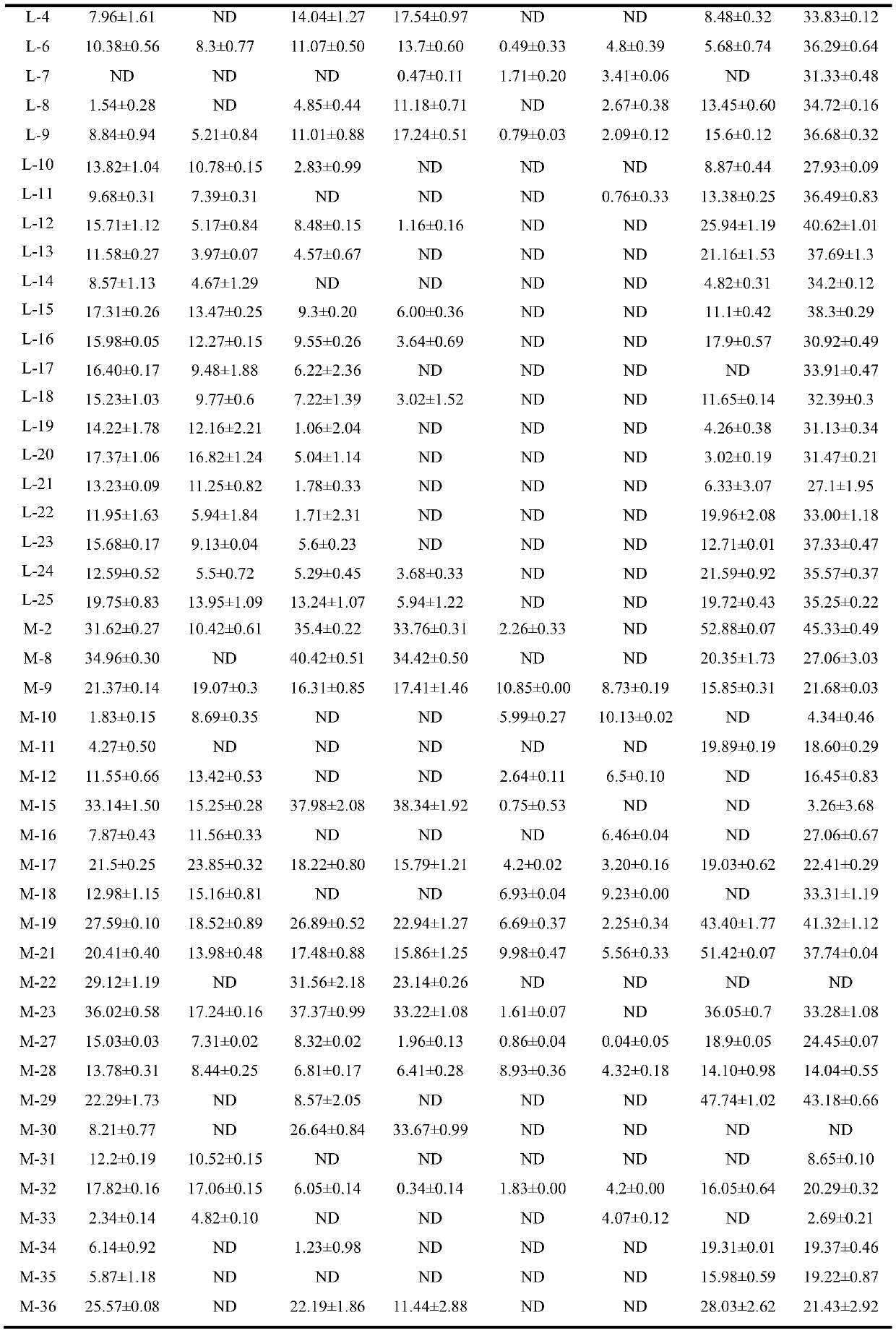Staphylococcus carnosus capable of lowering biogenic amine and application of Staphylococcus carnosus
A technology of staphylococcus carnosus and biogenic amines, applied in staphylococcus carnosus and its application fields, can solve problems such as human harm, and achieve the effect of various types of flavor substances
- Summary
- Abstract
- Description
- Claims
- Application Information
AI Technical Summary
Problems solved by technology
Method used
Image
Examples
Embodiment 1
[0025] Example 1 Screening and Identification of Biological Degradation Strains
[0026] (1) Primary screening of biogenic amine-degrading strains:
[0027] Take 5g of sauce unstrained spirits in a 100mL Erlenmeyer flask, add 50mL of normal saline, shake and mix well on a shaker, take the suspension and carry out gradient dilution to 10 -5 , take 100 μL of suspension for each gradient to spread on BAs solid medium and modified MRS solid medium, and culture in a 37°C incubator until the colonies grow well before they can be isolated.
[0028] Determination of biogenic amine degradation rate: Activate the single colony isolated from BAs solid medium and modified MRS solid medium in LB and modified MRS medium, adjust the initial OD value in phosphate buffer containing 100mg / L biogenic amine 0.6, and cultured statically in a 37°C incubator for 24h. Centrifuge at 4000×g for 5 minutes to obtain the supernatant, filter it through a 0.22 μm filter membrane, take 2 mL into a 10 mL ce...
Embodiment 2
[0044] Embodiment 2 utilizes the bean paste preparation of Staphylococcus carnus
[0045] First, soybeans, salt water and flour are used as raw materials, and the addition amounts are 38g / 100g, 50g / 100g and 12g / 100g respectively. Aspergillus oryzae 3.042 was added to soybeans to make the final concentration of 10 7 CFU / g, culture at 30°C for 24 hours to make koji, mix 20% (w / v) salt water into the tank after making koji to make the final concentration 10g / 100g, and inoculate 10-50mL / L Staphylococcus carneus when entering the tank M43, making the concentration of the strain in the sauce 10 7 CFU / g, with the sauce fermented grains without Staphylococcus carnus as a control, 5g / L putrescine, cadaverine, spermidine, spermine, tryptamine, phenylethylamine, group Amine and tyramine mixed solution 5mL, and left to ferment for 35 days in a constant temperature incubator at 37°C. Determination of the biogenic amine content in the soybean paste sample after 35 days of fermentation, t...
Embodiment 3
[0054] The salt tolerance of embodiment 3 Staphylococcus carnosus
[0055] (1) Use the improved MRS medium to activate Staphylococcus carnus M43 and another strain of Staphylococcus carnus M30 derived from the soybean paste, and adjust the initial OD value so that it is 0.1 in the improved MRS medium;
[0056] (2) Add the NaCl of 0g, 3g, 6g, 9g, 12g, 15g, 18g respectively in 100g culture medium, make NaCl final concentration be respectively 0%, 3%, 6%, 9%, 12%, 15%, 18%;
[0057] (3) and cultured statically in a 37°C incubator for 24 hours;
[0058] (4) Calculate the number of viable bacteria respectively. The number of viable bacteria of the strains M43 and M30 is shown in Table 4.
[0059] Table 4 The number of viable bacteria (log CFU / mL) of Staphylococcus carnosus in different concentrations of NaCl
[0060]
PUM
 Login to View More
Login to View More Abstract
Description
Claims
Application Information
 Login to View More
Login to View More - R&D
- Intellectual Property
- Life Sciences
- Materials
- Tech Scout
- Unparalleled Data Quality
- Higher Quality Content
- 60% Fewer Hallucinations
Browse by: Latest US Patents, China's latest patents, Technical Efficacy Thesaurus, Application Domain, Technology Topic, Popular Technical Reports.
© 2025 PatSnap. All rights reserved.Legal|Privacy policy|Modern Slavery Act Transparency Statement|Sitemap|About US| Contact US: help@patsnap.com



